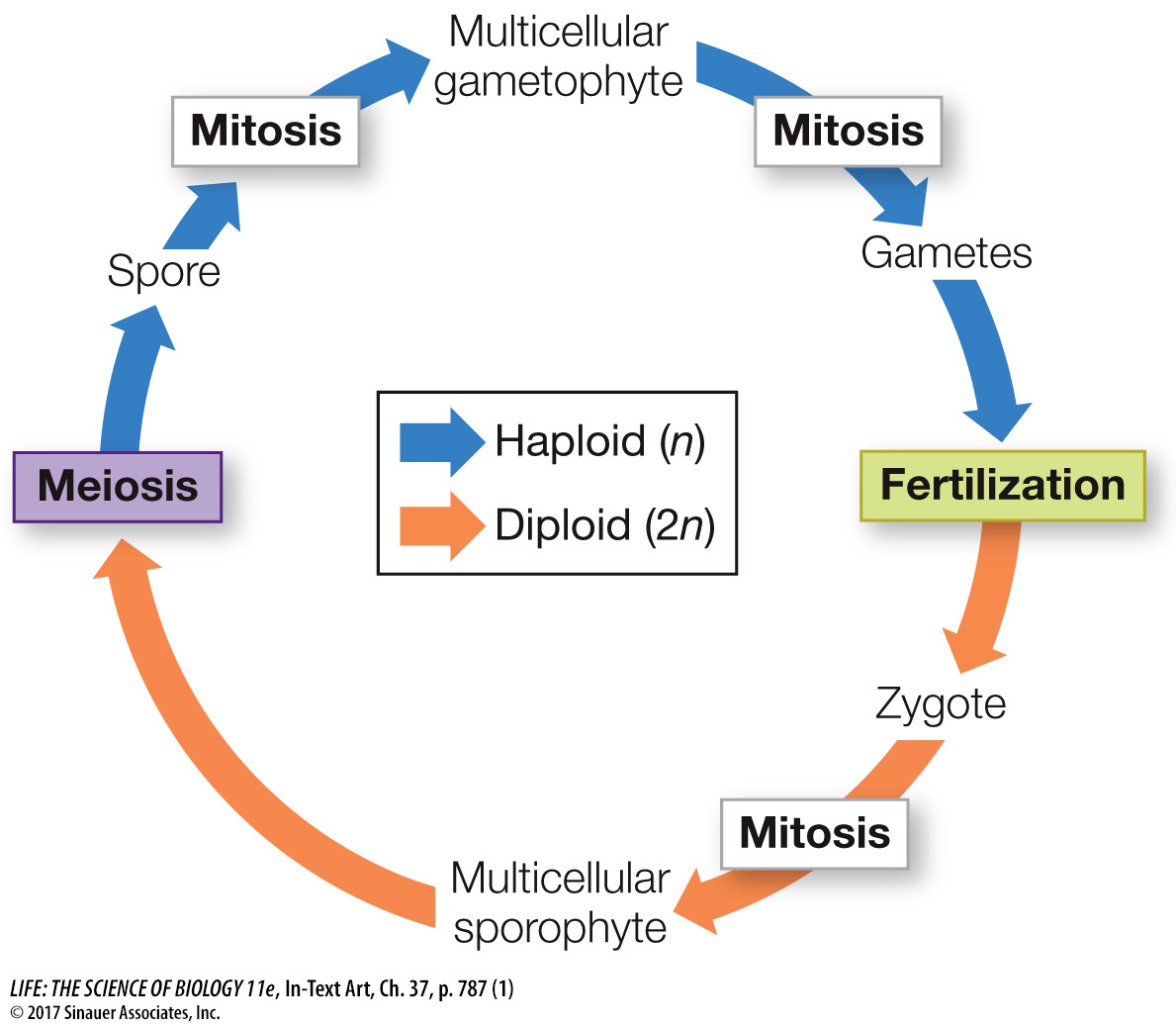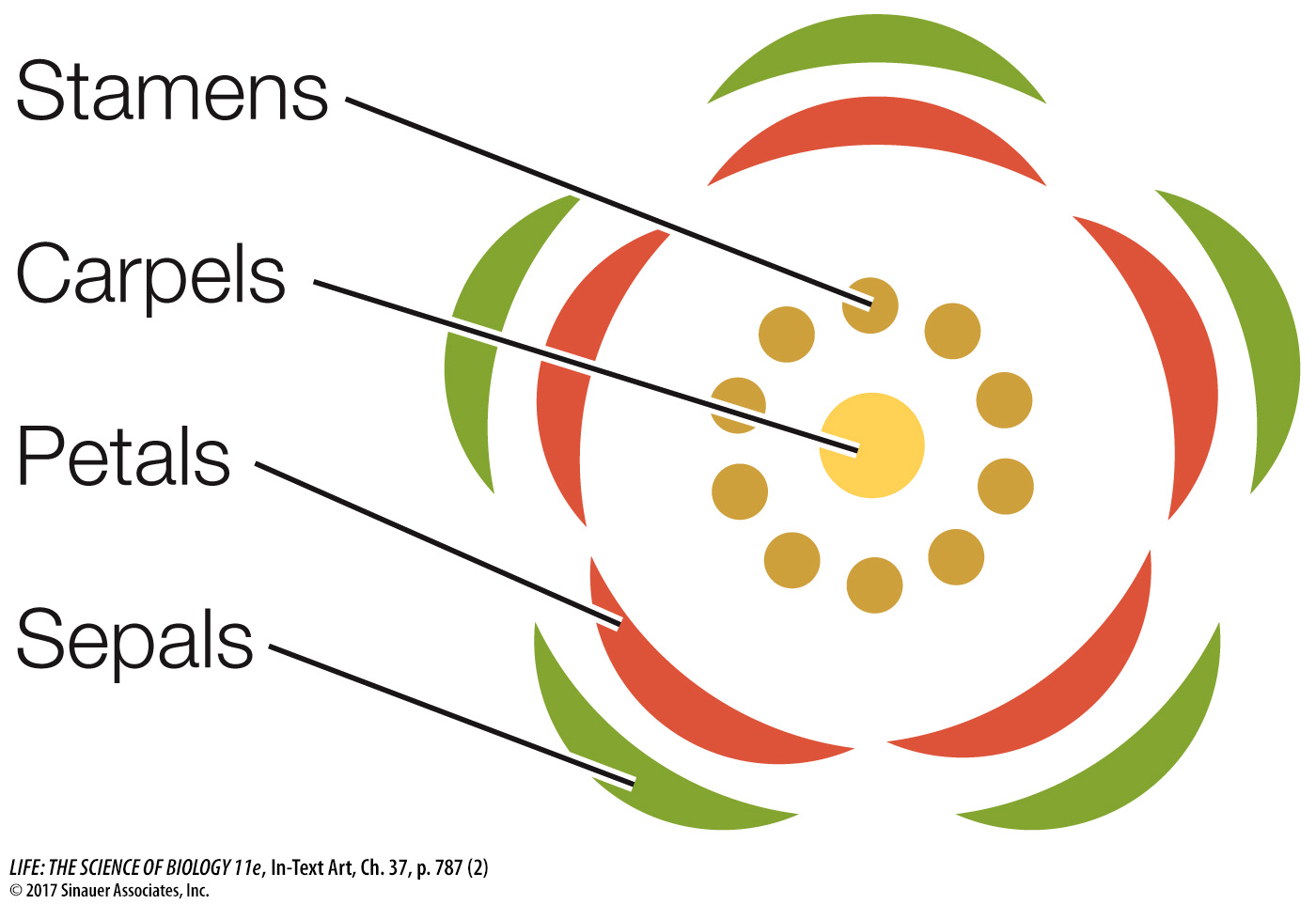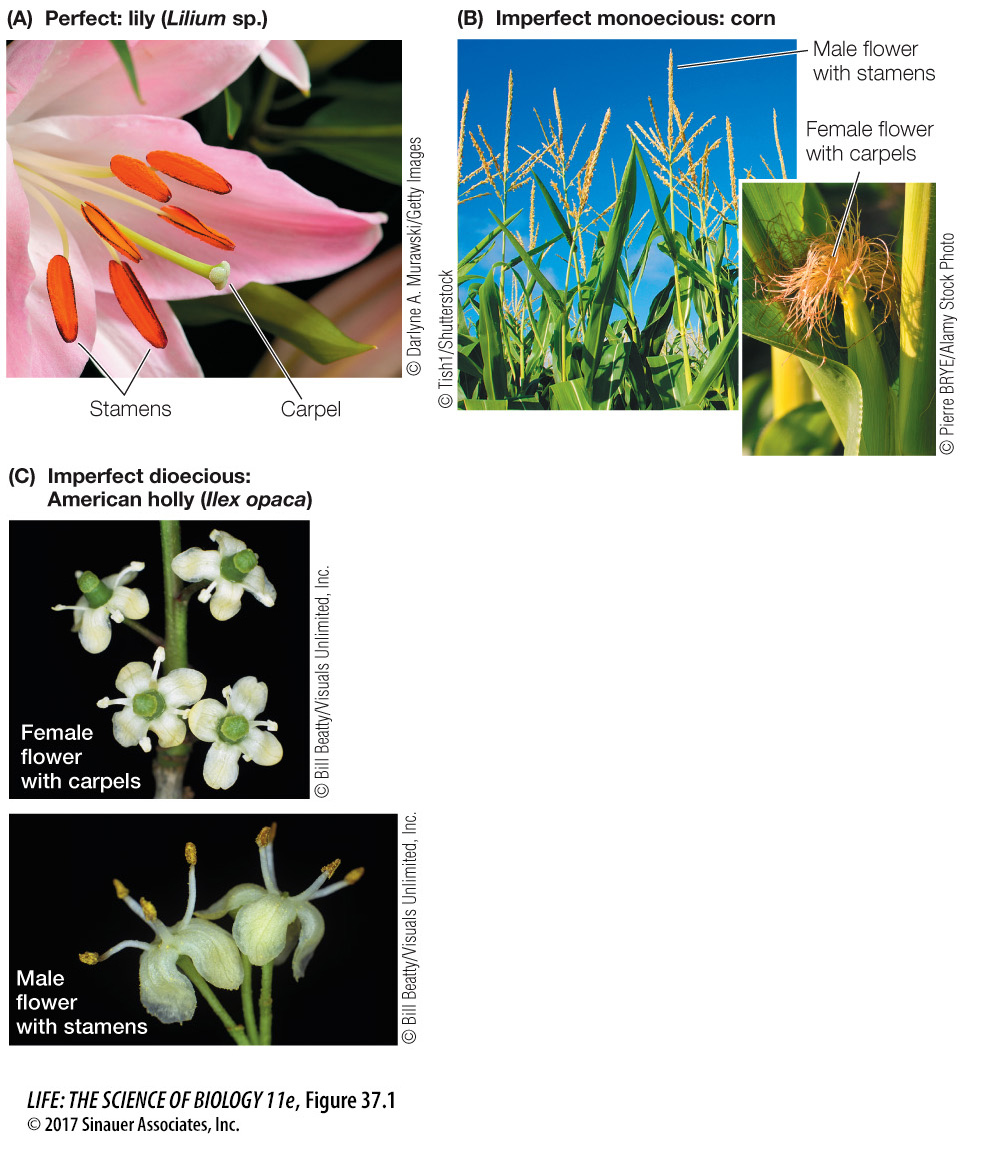How does the flower function as a structure for sexual reproduction?
The plant life cycle typically involves the alternation of haploid and diploid generations (see Key Concept 11.4):

In angiosperms, the adult plant is a diploid sporophyte, and the male and/or female haploid gametophytes (structures that produce gametes) are contained in the flowers (see Key Concept 28.1 for a description of flower parts and floral evolution). A complete flower consists of four concentric groups of organs arising from modified leaves: the carpels, stamens, petals, and sepals.

The carpels are the female sex organs that contain the developing female gametophytes.
The stamens are the male sex organs that contain the developing male gametophytes.
You learned in Chapter 19 how specific transcription factors control the differentiation of the meristem into the various organs of the flower. Most angiosperms have flowers with both stamens and carpels; such flowers are termed “perfect” (Figure 37.1A). “Imperfect” flowers, by contrast, are those with only male or only female sex organs. Male flowers have stamens but not carpels, and female flowers have carpels but not stamens. Some plants, such as corn, bear both male and female flowers on an individual plant; such species are called monoecious (“one house”) (Figure 37.1B). In dioecious species, individual plants bear either male-
